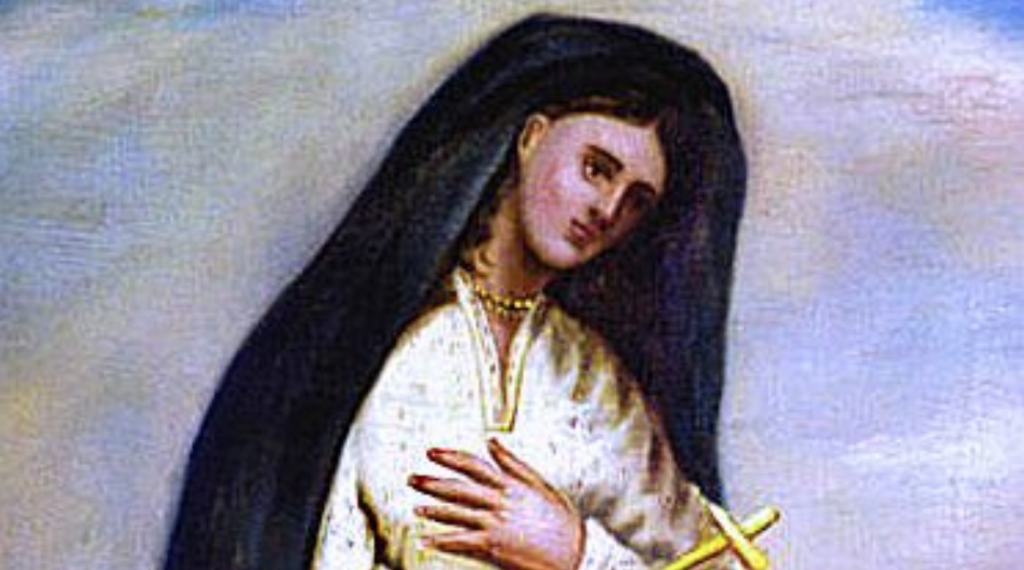St. Kateri Tekakwitha was born in Auriesville, New York, in 1656. Her mother was a Christian Algonquin woman, and her father was a pagan Mohawk chief. When she was young, a smallpox epidemic attacked her tribe, and both of Kateri’s parents died. Kateri was left with permanent scars across her faith and poor eyesight. Her uncle became chief of the tribe, adopted Kateri, and began planning her marriage.
When three Jesuit fathers visited the tribe in 1667, they spoke to Kateri about Christ. She did not ask to be baptized, but she believed in Jesus fully. Kateri also realized she was being called to live as a consecrated virgin for God.
Kateri struggled to remain faithful against the opposition from her tribe. She was ridiculed and ostracized after she refused the arranged marriage her uncle had planned.
When Kateri was 18, Fr. Jacques de Lamberville returned to the Mohawk village, and she asked to be baptized. Shortly afterwards, she realized that the Mohawk village life, filled with violence and debauchery, was unsafe for her. Kateri escaped to the town of Caughnawaga in Quebec, where she spent the last years of her short life.
Kateri lived in austerity, and prayed constantly. She was said to have reached the highest levels of mystical union with God, and was credited with many miracles while she was still alive.
Kateri died on April 17, 1680, at the age of 24. Witnesses reported that her smallpox scars vanished from her face moments before her death, leaving her radiantly beautiful.
Devotion to Kateri began immediately after her death. Her body, enshrined in Caughnawaga, is visited by thousands of pilgrims every year. Pope John Paul II beatified her in 1980, and she was canonized by Pope Benedict XVI in 2012.
Kateri Tekakwitha, known as the “Lily of the Mohawks,” is the first Native American to be canonized.

